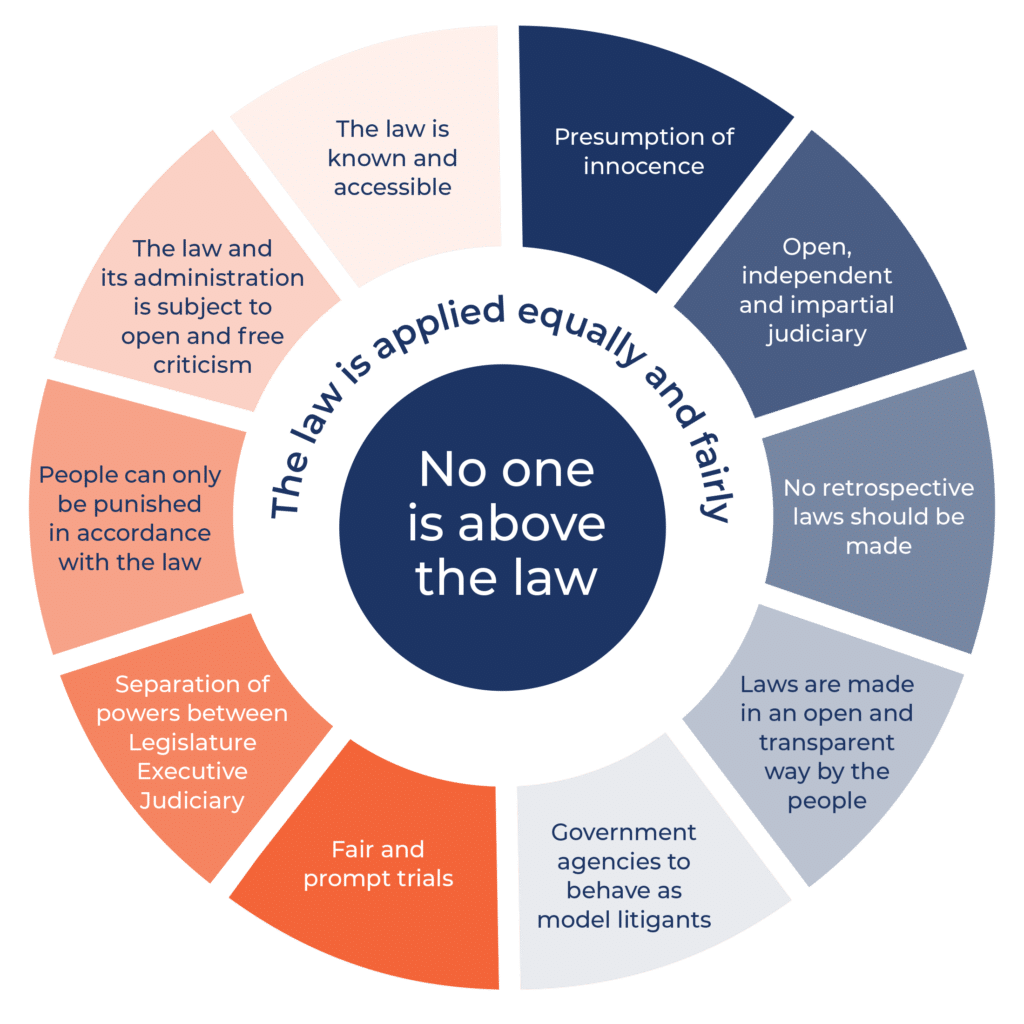Tomorrow is the 70th anniversary of judgment being handed down in the main Nuremberg trial, the trial of high-ranking alleged German war criminals, as well as seven organisations, by the International Military Tribunal.
This trial was only one of many war crimes trials conducted in Germany and Japan at the end of the war. However, it is the most famous because it was the only trial conducted by all of the victorious Allied powers together, and it dealt with the highest ranking German officials.
What were the accused charged with?
The 24 accused were senior German political, military and industrial leaders, and were charged with four crimes:
1. Participating in a conspiracy to commit crimes against peace, war crimes, and crimes against humanity;
2. Committing crimes against peace;
3. Committing war crimes; and
4. Committing crimes against humanity.
‘Crimes against peace’ refers to the planning, preparation, initiation, or waging of a war of aggression. ‘War crimes’ refers to acts committed in violation of the laws of war, including, for example, killing surrendered combatants, or using torture. Both of these categories of international crime pre-dated the Second World War, and had relatively clearly defined content.
However, these two categories alone were not sufficient to cover the full range of behaviour and actions of Nazi Germany. In particular, they did not cover actions undertaken as part of the Holocaust or Final Solution. They also did not cover the treatment of other civilian populations by the Nazis. The Allied powers were determined that these actions should also be publicly and legally condemned. Therefore, a new category of international crime, ‘crimes against humanity’, was defined as:
Murder, extermination, enslavement, deportation, and other inhumane acts committed against any civilian population, before or during the war, or persecutions on political, racial or religious grounds in execution of or in connection with any crime within the jurisdiction of the Tribunal, whether or not in violation of the domestic law of the country where perpetrated.
Where did the IMT’s jurisdiction come from?
The jurisdiction of the Tribunal was a tricky issue. Not only was the behaviour captured by ‘crimes against humanity’ not explicitly criminalised before the war, leading to some concerns about retrospective legislation, but the grounds upon which the Allies could judge the Germans were also unclear.
The Instrument of Surrender signed by the Germans in Reims on 7 May 1945, and again in Berlin on 8 May 1945, included a provision to the effect that the terms and conditions of this surrender did not prejudice the terms and conditions that may be included in any later, more encompassing, surrender document. That later surrender document – the Berlin Declaration of 5 June 1945 – purported to dissolve the Nazi regime, and replaced it with the Allied Control Council, made up of representatives from the four Allied powers – the United Kingdom, the United States, the Soviet Union, and France.
In consultation with this Council, the four Allies then executed the London Charter, which set up the International Military Tribunal for the “prosecution and punishment of the major war crimes of the European Axis.” The trials were to be conducted before a panel of judges, not a jury, and the defendants were allowed to present evidence and cross-examine witnesses.
What happened at the trial?
Of the 24 accused war criminals, only 21 made it before the court. Nazi party secretary Martin Bormann and the head of the German Labour Front Robert Ley both committed suicide before the trial began. Bormann was, nevertheless, convicted in absentia. In addition, German industrialist Gustav Krupp was deemed medically unfit for trial. Prosecutors tried to substitute his son Alfried, who had run Krupp during the war anyway, but the swap was rejected by the panel of judges.
12 defendants were sentenced to death, three to life imprisonment, and four to limited prison terms. The remaining three were acquitted.
The Nuremberg trials and the rule of law
Despite concerns about retrospective criminalisation and unclear jurisdiction, the trial by the International Military Tribunal unambiguously marked a watershed moment in the international rule of law. Whether or not Allied revenge and punishment on Nazi Germany was inevitable after the war, it was, for the first time in history, channeled through legal institutions.
The four victorious powers made a conscious decision to arraign criminals before the eyes of the world, provide them with some mechanism by which to defend themselves, and proceeded to outline, often in painstaking and confronting detail, the charges and evidence against them.
At the end of a war that will be remembered around the world for its brutality, its barbarism, its ruthless unfeeling inhumanity, the International Military Tribunal represented a flawed but determined first step back to a world of law, justice, and rectitude.
— William Shrubb


